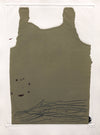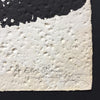Antoni Tàpies
Biography

Biography
Antoni Tàpies (1923-2012) was a Spanish painter and sculptor considered one of the most influential artists of the 20th century. He was born in Barcelona and studied law before dedicating himself to painting. After contracting tuberculosis, he abando...
Leer más
Economic information
Revaluation Blue Chip
Profile
Ranking Top 100
Auction sales 36 months
All
Filter
Brand
Price
€
-
€
Size
Color
Product type
Year
Language

CAN'T FIND WHAT YOU'RE LOOKING FOR?
We help you.
If you're interested in seeing other available works, we'll contact you without obligation.
Certified works
All works have a Certificate of Authenticity
We are experts
With more than 20 years of experience in collecting and the art market
Pay comfortably
Pay in 3 interest-free installments or in 12 months thanks to Sequra
Online advice
Personalized advice, without obligation, and receive proposals from our experts
JOIN OUR NEWSLETTER

Descubre el fascinante mundo del arte de la mano de expertos








